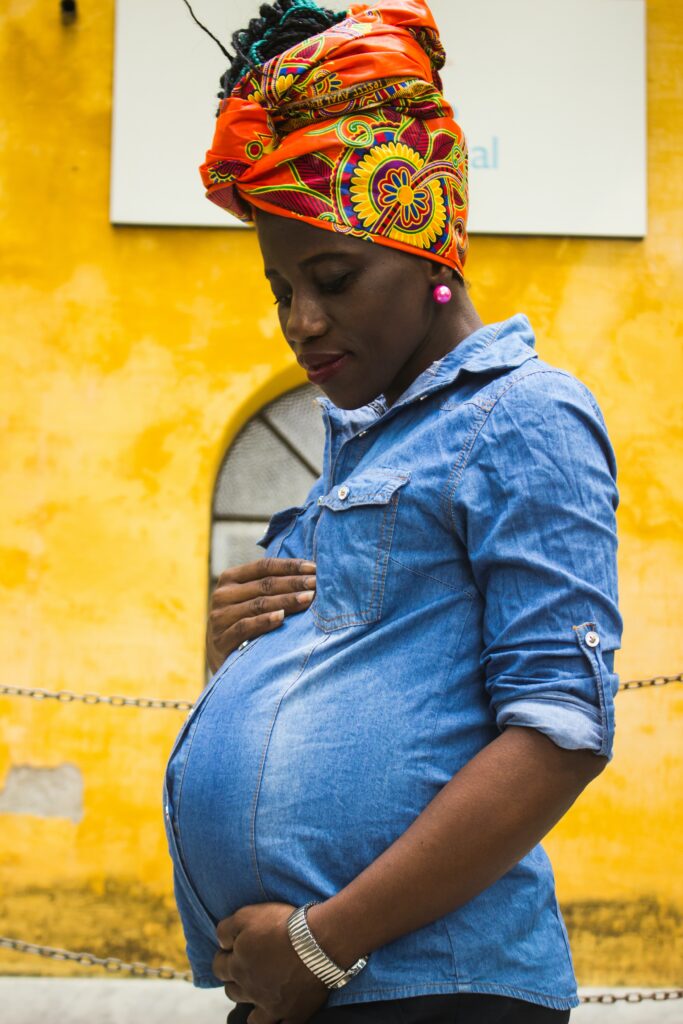20 years of life with HIV
- July 14, 2022
- Africa / HIV/AIDS / The Global Fund / Women
- By The Bureau

From a perceived death sentence to immense hope, a story from Cameroon
As the Global Fund commemorates its 20th anniversary, I wish to share my experience and journey of 20 years of living with HIV.
In 2001, pregnant and full of hope and confidence for the future, I discovered my HIV-positive status during an antenatal consultation. This marked a new phase in my life, full of questions, uncertainties and worries.
Since then, a lot of water has flowed under the bridge, especially with the creation of the Global Fund to Fight AIDS, TB and Malaria, which has brought immense hope to people living with HIV.
At that time, the cost of HIV care was out of reach for the majority of the infected people. Although I was a senior civil servant (in one of the highest categories) in Cameroon, I could not afford the costs associated with this infection that included consultations, drugs and multiple laboratory tests. Many people in similar circumstances did not know where to turn to. Not to mention the majority of PLHIV with either low-paying or irregular jobs or no job at all.
Living with HIV in the early 2000s was not easy. Many people perceived HIV infection as a death sentence; some thought HIV and AIDS were a disease of people with promiscuous sexual behavior and who, therefore, deserve their fate. Others thought HIV is highly contagious like tuberculosis. These reasons made the disease isolating. Consequently, management of the psychosocial aspect by the patient on his own was a frightening and discouraging prospect.
In addition, at that time, the level of knowledge about HIV among health care personnel was extremely limited. This lack of knowledge led them to mislead people who tested positive for HIV by overly alarming them about their condition, thus causing distress among many patients. Lack of adequate information made PLHIV withdraw into themselves, as a result, many lost their lives.
The State of Cameroon did not remain inactive in the face of this scourge whose consequences were already visible among its populations and resolutely engaged in the response to this infection through a national strategic plan, albeit limited resources, leading obviously to commendable but insufficient results.
The Global Fund has therefore been an exceptional opportunity to rekindle hope and change the landscape with regard to HIV prevention and care interventions for patients who, in the past, were expected to pay for their laboratory tests as well as purchase ARVs. Out of pocket expenses ballooned and for obvious reasons, many people could not afford medical expenses.
Overview of the Evolution of HIV Care in Cameroon over 20 years

Prevention of Mother-To-Child Transmission (PMTCT)
According to the 2014 National Guidelines for HIV Prevention and Care in Cameroon, “Cameroon is among the 22 priority PMTCT countries, 21 of which are in sub-Saharan Africa. Without any intervention, nearly 35% of children born to HIV+ mothers will be infected with HIV during pregnancy, delivery or breastfeeding.”
In my specific case, I was diagnosed when I was pregnant through the PMTCT programme. At that time, PMTCT was not yet well developed in Cameroon, which constituted a double burden for me because I was worried about my future and that of my unborn child at the same time.
During my two experiences in 2001 and 2006, which fortunately resulted in the birth of two HIV-negative children, the management of PMTCT was still quite embryonic. For the first PMTCT in 2001, I had a Nevirapine tablet at the time of delivery and the newborn received prophylactic Nevirapine from the day of birth and for about a week. In 2006, there was a slight improvement which consisted in putting the HIV-positive pregnant woman on ARV treatment from the 28th week of pregnancy until delivery, giving her a Nevirapine tablet at the time of delivery, and giving the above mentioned prophylactic treatment to the newborn.
Over the years, the PMTCT programme in Cameroon continued to improve, thanks to the various grants, from Option B+, which recommended HIV positive pregnant women to systematically initiate ARV treatment regardless of their clinical stage or CD4 count. This treatment was to be continued throughout pregnancy, delivery, the breastfeeding period and beyond for life. And today, we have the “Test and Treat” option, which aims to put all HIV-positive people on treatment in order to achieve one of the UNAIDS 90-90-90 objectives, namely, by 2020, 90% of all people with diagnosed HIV infection will receive sustained antiretroviral therapy.”
- Evolution of HIV Management in Adults
Over time, the main eligibility criterion for ART initiation in adults moved from a CD4 count ≤ 200 at the beginning, to a CD4 count≤350, then ≤500, and nowadays to the “Test and Treat” approach. This, as expected, exponentially increased the active file of patients on ARVs, from a few hundred at the beginning of HIV treatment in the 2000s to 312,217 people as of December 31, 2019 according to the progress report on the fight against AIDS in Cameroon in 2020. These figures are steadily increasing and therefore require substantial resources.
The Global Fund’s Contribution to Improving HIV Prevention and the Follow-up of PLHIV in Cameroon over time
According to the latest nationwide study (CAMPHIA 2017), HIV prevalence in the general population has been on a downward trend since 2004, dropping from 5.5% in 2004 to 4.3% in 2011, and then to 3.4% in 2017. However, a trend towards the feminization of the epidemic can be noted according to the same study (5% of PLHIV are women versus 2.3% of men among adults). In addition, adolescent girls and young women (15-19 and 20-24 years old) are on average 5 times more infected than their male counterparts. Hence, the importance of placing greater emphasis on prevention among adolescent girls and young women.
The 2020 audit report on Global Fund grants in Cameroon mentions that since 2003, the Global Fund has disbursed approximately 608 million euros overall for Cameroon, half of which has certainly been devoted to the fight against AIDS, which now allows for free HIV care.
The results in this context, as published in the same report, are impressive:
“500,000 people living with HIV, 78% of whom know their HIV status. 74% of people living with HIV reported to be on treatment in 2020. Annual infections have decreased by 57% since 2010. AIDS-related deaths decreased by 47% between 2010 and 2020.”
There has also been a clear improvement in the psychosocial care of PLHIV through the recruitment of community outreach workers and psychosocial counsellors in charge of active case-finding and retention of patients on treatment, such as screening at the points of entry to accredited HIV care centers and in the community, regular monitoring of the active file of HIV treatment centers, tracking of patients that are lost to follow-up, and home visits, to name but a few.
Other significant achievements include:
- Improved biological and virological monitoring in terms of cost-effectiveness for the patient, thanks to subsidized check-ups, especially viral load (VL) testing, which only a few years ago used to cost 100,000 CFAF, or about $200 USD, and was therefore unaffordable for almost all patients on treatment. (The minimum wage in Cameroon is 36,000 CFAF, or about 75 USD). Viral load testing is now provided free of charge.
- Improved adherence to ARV treatment and reduced treatment failure rates as a result of the availability of free ARVs, therapeutic education and the retention activities mentioned above
- Improved data reliability through better control and monitoring of the active file using more appropriate data collection tools
- Better management of TB/HIV co-infections in particular.
Need for Additional Efforts
We can only applaud the tremendous progress made in HIV prevention and the overall management of PLHIV, as evidenced by a drop in HIV prevalence in Cameroon from 5.6% to 2.7% between 2004 and 2020, a 47% drop in HIV related deaths, the decentralization of HIV care structures, and a reduction in the cost of treatment and biological tests, to name just a few. However, more needs to be done, mainly in the area of care for children living with HIV, and health and community systems strengthening in order to sustain the gains achieved and further reverse the trend of the epidemic and achieve its elimination by 2030.
We, as patients, hope that research will progress and eventually lead to the “development of a vaccine and a cure”.
We would therefore like to make a strong appeal to our Heads of State, Government and philanthropists in Africa to strengthen domestic resource mobilization, without which the goal of ending AIDS, TB and malaria by 2030 will remain a utopia.
We also take this opportunity to renew our gratitude to the Global Fund and all the other donors for their multifaceted actions for the benefit of the people of Africa.


